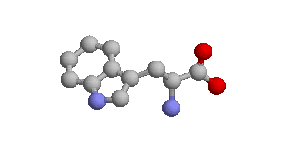Abstract
Содержание
- Introduction
- Goals and objectives of the study
- Relevance of the study
- The object and subject of the study
- Problems related to computer modeling and visualization of the molecular structure of liquids
- Conclusions
- List of used literature
Introduction
The molecular structure of liquids is the basis for understanding and predicting their physical and chemical properties. It plays an important role in various fields such as physics, chemistry, biology, materials science and pharmaceuticals [1]. Proper modeling and visualization of the molecular structure of liquids makes it possible to develop new materials, optimize production processes, predict the physical and chemical properties of substances, research pharmaceuticals and conduct virtual experiments.
However, various problems arise in computer modeling and visualization of the molecular structure of liquids. Firstly, the complexity of describing the molecular structure of liquids requires the development of efficient and accurate numerical methods. Secondly, high computational costs and limited resources can become an obstacle to conducting complex simulations. In addition, visualization limitations can make it difficult to understand and analyze the results [2].
Finding ways to solve these problems is an important task for the development of modern science and industry. In this field, research is being conducted to develop new and improve existing numerical methods for modeling the molecular structure of liquids. In addition, the development of more efficient computational algorithms and the use of parallel computing makes it possible to cope with the problem of resource consumption. Another important area is the development of new approaches to visualization of the molecular structure of liquids, which will allow for a better presentation of the results obtained and increase understanding of the processes taking place [3].
Thus, the topic "Analysis of problems of computer modeling and visualization of the molecular structure of liquids and the search for ways to solve them" is relevant and important for modern science and industry, and represents a promising area of research [4].
Goals and objectives of the study
Target: Research and develop recommendations for improving the labor standardization system at the enterprise in order to increase production efficiency and improve working conditions for employees.
Tasks:
- Analyze problems related to computer modeling and visualization of the molecular structure of liquids.
- Identify problems that arise in the process of modeling and visualization of liquids.
- To study the causes of problems and shortcomings in fluid modeling.
- To determine the factors influencing the success of the implementation of the labor rationing system at the enterprise.
- To identify potential applications of modeling and visualization of the molecular structure of liquids.
- To develop methods for solving problems and shortcomings identified in the process of modeling and visualization of liquids.
- Conduct experiments and testing of the developed methods to assess their effectiveness.
- To compare the results of modeling and visualization with experimental data to assess the accuracy and reliability of the developed methods.
- To propose recommendations for improving computer modeling and visualization of the molecular structure of liquids.
Relevance of the study
The advantage of the MD method is the possibility of modeling atomic ensembles, both in conditions of thermal equilibrium and in non-thermodynamic fast-flowing processes (for example, during the formation of cascades of atomic collisions during irradiation or ion implantation).The molecular dynamics method has a number of useful features in comparison with other computer modeling methods. Firstly, it allows solving the problems of structural and energy transformations, both in crystalline and non-crystalline materials. Secondly, it makes it possible to measure the dynamics of the studied processes in real time. The main disadvantage of the method is the large amount of machine time required to perform calculations.
The object and subject of the study
Object of research: computer modeling and visualization of the molecular structure of liquids.
Subject of research: problems related to computer modeling and visualization of the molecular structure of liquids, as well as the search for ways to solve them.
Computer modeling and visualization of the molecular structure of liquids is an actively developing field of scientific research. This is due to the fact that liquids play an important role in many processes, including reactions of chemical compounds, diffusion and adsorption processes, as well as in biological systems.
Computer modeling and visualization of the molecular structure of liquids is an actively developing field of scientific research. This is due to the fact that liquids play an important role in many processes, including reactions of chemical compounds, diffusion and adsorption processes, as well as in biological systems.
Labor standardization system at the enterprise
One of these problems is the limited accuracy of modeling and visualization of molecular structures. Standard methods such as the molecular dynamics method or the Gibbs-Bogolyubov method may not take into account certain physical phenomena such as diffusion or compression. In addition, they may be too resource-intensive or inefficient to solve the relevant tasks [5].
Another problem is the difficulty of interpreting simulation and visualization results. Often, information about the structure or dynamics of molecular systems can be difficult to understand or require specialized knowledge. This may limit the availability of these methods for most researchers and prevent their widespread use [6].

Figure 1 – Stages of organizing labor standards at an enterprise
Conclusions
This work has a scientific novelty, as it explores the problems of computer modeling and visualization of the molecular structure of liquids and suggests ways to solve them. This may lead to the development of more efficient and accurate methods for the analysis and study of liquids, as well as the expansion of their application in various fields of science and technology [7].
List of used literature
- Колокол А.С. «Микроструктурное моделирование простых жидких металлов» Москва, 2007 год – Режим доступа: [Ссылка]
- М.А. Шилов В.В. Веселов, д-р техн. наук, проф. «КОМПЬЮТЕРНОЕ МОДЕЛИРОВАНИЕ МОЛЕКУЛЯРНЫХ СИСТЕМ МЕТОДОМ МОЛЕКУЛЯРНОЙ ДИНАМИКИ» Иваново, 2010 – Режим доступа: [Ссылка]
- М.А Шилов Компьютерное моделирование молекул (молекулярный дизайн) и химических реакций – Режим доступа: [Ссылка]
- Бучаченко А.Л. Химия на рубеже веков: свершения и прогнозы – Успехи химии, 1999, том 68, с. 85-1 – Режим доступа: [Ссылка]
- Зефиров Н.С. О тенденциях развития современной органической химии – Соросовский Образовательный Журнал, 1996 – Режим доступа: [Ссылка]
- Саркисов О.М., Уманский С.Я. Фемтохимия – Успехи химии 2001, т.70, №6, с.515-538 – Режим доступа: [Ссылка]
- Сумм Б.Д.,Иванова Н.И. Коллоидно-химические аспекты нанохимии от Фарадея до Пригожина – Вестник Московского Университета, Химия 2001, том 42, №5, с.300-305 – Режим доступа: [Ссылка]
- М.А. Шилов В.В. Веселов, д-р техн. наук, проф. «КОМПЬЮТЕРНОЕ МОДЕЛИРОВАНИЕ МОЛЕКУЛЯРНЫХ СИСТЕМ МЕТОДОМ МОЛЕКУЛЯРНОЙ ДИНАМИКИ» Иваново, 2010 – Режим доступа: [Ссылка]
